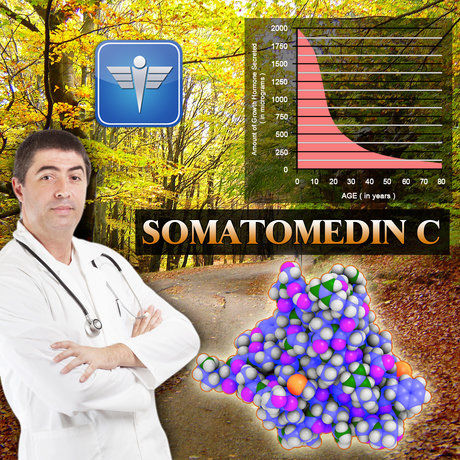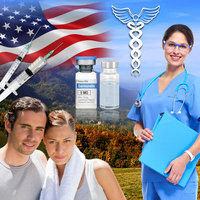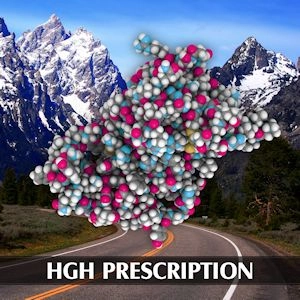Introduction to Rowing and Back Injuries
Rowing, a sport that combines strength, endurance, and technique, is immensely popular among American males. However, the repetitive motion and high physical demand of rowing can lead to significant back injuries, particularly in the lower back. Understanding and implementing sports medicine techniques is crucial for preventing these injuries and ensuring a long, healthy rowing career.
The Prevalence of Back Injuries in Rowing
Back injuries are among the most common ailments reported by rowers. The sport's nature, which involves repetitive flexion and extension of the spine, places considerable stress on the lumbar region. Studies have shown that up to 50% of competitive rowers experience back pain at some point, with a significant portion of these cases resulting in time away from the sport.
Sports Medicine Techniques for Injury Prevention
To mitigate the risk of back injuries, American male rowers can benefit from a multifaceted approach to sports medicine. This includes proper training, biomechanical analysis, and targeted physical therapy.
Proper Training and Technique
One of the foundational elements of injury prevention is ensuring that rowers are trained in proper technique. Coaches should emphasize maintaining a neutral spine throughout the rowing stroke, avoiding excessive lumbar flexion or extension. Incorporating strength training that focuses on core stability and flexibility can also help support the spine during rowing.
Biomechanical Analysis
Utilizing biomechanical analysis can provide invaluable insights into a rower's technique. High-speed cameras and motion capture technology can identify subtle deviations in form that may contribute to back strain. By addressing these issues, rowers can adjust their technique to reduce the risk of injury.
Targeted Physical Therapy
Physical therapy plays a critical role in both preventing and treating back injuries. Therapists can design personalized programs that include exercises to strengthen the muscles supporting the spine, such as the erector spinae, multifidus, and abdominal muscles. Additionally, techniques such as manual therapy and dry needling can help alleviate muscle tension and improve flexibility.
Incorporating Technology and Wearables
Advancements in technology have introduced wearable devices that can monitor a rower's biomechanics in real-time. These devices can alert athletes to potential issues with their form, allowing for immediate adjustments. Furthermore, data collected from wearables can be used to tailor training programs and track progress over time.
Nutrition and Recovery
Nutrition and recovery are often overlooked aspects of injury prevention. A diet rich in anti-inflammatory foods, such as omega-3 fatty acids and antioxidants, can help reduce inflammation and support muscle recovery. Adequate rest and recovery periods are also essential to prevent overuse injuries and allow the body to heal.
The Role of Mental Health
Mental health is another critical component of injury prevention. Stress and anxiety can lead to muscle tension, which may exacerbate back pain. Rowers should be encouraged to engage in stress-reduction techniques such as mindfulness, meditation, or yoga. A supportive team environment can also play a significant role in maintaining mental well-being.
Conclusion: A Holistic Approach to Injury Prevention
Preventing back injuries in American male rowers requires a holistic approach that encompasses proper training, biomechanical analysis, targeted physical therapy, technology, nutrition, recovery, and mental health. By integrating these sports medicine techniques, rowers can enjoy a safer and more sustainable participation in the sport they love. As the field of sports medicine continues to evolve, it is essential for rowers and their support teams to stay informed and proactive in their approach to injury prevention.
Contact Us For A Fast And Professional Response

- Preventing Ankle Injuries in Volleyball: Sports Medicine and Technology Solutions [Last Updated On: March 3rd, 2025] [Originally Added On: March 3rd, 2025]
- Hamstring Injuries in Sprinters: Treatment, Rehabilitation, and Prevention Strategies [Last Updated On: March 17th, 2025] [Originally Added On: March 17th, 2025]
- Snowboarding Wrist Injuries: Prevention, Treatment, and Rehabilitation Strategies for American Males [Last Updated On: March 18th, 2025] [Originally Added On: March 18th, 2025]
- Optimizing Recovery for American Male Martial Artists: A Holistic Sports Medicine Approach [Last Updated On: March 19th, 2025] [Originally Added On: March 19th, 2025]
- Sports Medicine: Enhancing Performance and Longevity in American Male Water Polo Players [Last Updated On: March 19th, 2025] [Originally Added On: March 19th, 2025]
- Sports Medicine's Crucial Role in Preventing Overuse Injuries in American Male Climbers [Last Updated On: March 19th, 2025] [Originally Added On: March 19th, 2025]
- Sports Medicine's Vital Role in Enhancing Triathlete Performance and Health [Last Updated On: March 20th, 2025] [Originally Added On: March 20th, 2025]
- Surfing Injuries in American Males: Prevalence, Prevention, and Sports Medicine Advances [Last Updated On: March 20th, 2025] [Originally Added On: March 20th, 2025]
- Sports Medicine Revolutionizes CrossFit: Enhancing Safety and Performance for American Males [Last Updated On: March 21st, 2025] [Originally Added On: March 21st, 2025]
- Preventing Shoulder Injuries in Lacrosse Goalies: A Comprehensive Sports Medicine Approach [Last Updated On: March 21st, 2025] [Originally Added On: March 21st, 2025]
- Sports Medicine Innovations Aid American Male Rowers with Lower Back Pain Management [Last Updated On: March 21st, 2025] [Originally Added On: March 21st, 2025]
- Sports Medicine: Enhancing Health and Performance in American Male Figure Skating [Last Updated On: March 21st, 2025] [Originally Added On: March 21st, 2025]
- Sports Medicine: Enhancing Performance and Longevity for American Male Table Tennis Players [Last Updated On: March 21st, 2025] [Originally Added On: March 21st, 2025]
- Beach Volleyball Ankle Injuries: Prevention, Training, and Rehabilitation Strategies [Last Updated On: March 22nd, 2025] [Originally Added On: March 22nd, 2025]
- Sports Medicine Enhances Performance and Longevity in American Male Polo Players [Last Updated On: March 22nd, 2025] [Originally Added On: March 22nd, 2025]
- BMX Challenges and Recovery: The Vital Role of Sports Medicine for American Males [Last Updated On: March 23rd, 2025] [Originally Added On: March 23rd, 2025]
- Sports Medicine's Impact on Injury Management in American Male Field Hockey Players [Last Updated On: March 23rd, 2025] [Originally Added On: March 23rd, 2025]
- Ankle Health Strategies for American Male Basketball Point Guards: Prevention to Rehabilitation [Last Updated On: March 23rd, 2025] [Originally Added On: March 23rd, 2025]
- Sports Medicine's Vital Role in Enhancing Soccer Defenders' Recovery and Performance [Last Updated On: March 23rd, 2025] [Originally Added On: March 23rd, 2025]
- Sports Medicine Revolutionizes Recovery for American Male Ice Hockey Players [Last Updated On: March 23rd, 2025] [Originally Added On: March 23rd, 2025]
- Ultimate Frisbee: Knee Health Strategies for American Male Athletes [Last Updated On: March 24th, 2025] [Originally Added On: March 24th, 2025]
- Sports Medicine's Role in Enhancing American Male Fencers' Performance and Longevity [Last Updated On: March 24th, 2025] [Originally Added On: March 24th, 2025]
- Sports Medicine Advances Aid Hip Recovery in American Male Track Cyclists [Last Updated On: March 24th, 2025] [Originally Added On: March 24th, 2025]
- Hamstring Injury Prevention Strategies for American Male Soccer Midfielders [Last Updated On: March 24th, 2025] [Originally Added On: March 24th, 2025]
- Rotator Cuff Injuries in American Male Swimmers: Diagnosis, Treatment, and Prevention [Last Updated On: March 24th, 2025] [Originally Added On: March 24th, 2025]
- Optimizing Recovery for American Football Wide Receivers: A Sports Medicine Approach [Last Updated On: March 24th, 2025] [Originally Added On: March 24th, 2025]
- Sports Medicine's Role in Enhancing American Male Swimmers' Health and Performance [Last Updated On: March 24th, 2025] [Originally Added On: March 24th, 2025]
- Sports Medicine Enhances Career Longevity for American Male Badminton Players [Last Updated On: March 24th, 2025] [Originally Added On: March 24th, 2025]
- Sports Medicine Revolutionizes Training for American Male Cyclists [Last Updated On: March 25th, 2025] [Originally Added On: March 25th, 2025]
- Sports Medicine Enhances Safety and Performance in American Male Trampoline Gymnastics [Last Updated On: March 25th, 2025] [Originally Added On: March 25th, 2025]
- Sports Medicine's Role in Preventing Shin Splints in American Male Runners [Last Updated On: March 25th, 2025] [Originally Added On: March 25th, 2025]
- Managing Groin Injuries in American Male Hockey Players: Strategies and Prevention [Last Updated On: March 25th, 2025] [Originally Added On: March 25th, 2025]
- Sports Medicine Revolutionizes Career Longevity for American Male Baseball Pitchers [Last Updated On: March 26th, 2025] [Originally Added On: March 26th, 2025]
- Sports Medicine Revolutionizes Training and Health for American Male Handball Athletes [Last Updated On: March 26th, 2025] [Originally Added On: March 26th, 2025]
- Sports Medicine Advances Aid Lacrosse Attackmen with Shoulder Injury Prevention and Treatment [Last Updated On: March 26th, 2025] [Originally Added On: March 26th, 2025]
- Cross-Country Skiing: Knee Health Strategies for American Male Skiers [Last Updated On: March 26th, 2025] [Originally Added On: March 26th, 2025]
- Sports Medicine's Role in Preventing Stress Fractures in American Male Runners [Last Updated On: March 26th, 2025] [Originally Added On: March 26th, 2025]
- Optimizing Recovery for American Male Soccer Goalkeepers: A Holistic Approach [Last Updated On: March 26th, 2025] [Originally Added On: March 26th, 2025]
- Preventing Achilles Tendon Injuries in American Male Runners: Sports Medicine Strategies [Last Updated On: March 26th, 2025] [Originally Added On: March 26th, 2025]
- Tendonitis in American Male Tennis Players: Sports Medicine Treatment and Prevention Strategies [Last Updated On: March 26th, 2025] [Originally Added On: March 26th, 2025]
- Lacrosse Midfielders' Hip Health: Sports Medicine Innovations and Rehabilitation Strategies [Last Updated On: March 26th, 2025] [Originally Added On: March 26th, 2025]
- Speed Skating Muscle Health: Strategies and Innovations for American Male Athletes [Last Updated On: March 27th, 2025] [Originally Added On: March 27th, 2025]
- Sports Medicine Revolutionizes Performance in American Male Volleyball [Last Updated On: March 27th, 2025] [Originally Added On: March 27th, 2025]
- Rugby Sevens' Rise in U.S. and Vital Role of Sports Medicine for Male Athletes [Last Updated On: March 27th, 2025] [Originally Added On: March 27th, 2025]
- Sports Medicine: Enhancing Performance and Health in American Male Track and Field Athletes [Last Updated On: March 28th, 2025] [Originally Added On: March 28th, 2025]
- Sports Medicine: Essential for American Male Rugby Forwards' Health and Performance [Last Updated On: March 28th, 2025] [Originally Added On: March 28th, 2025]
- Sports Medicine Boosts Career Longevity for American Male Baseball Outfielders [Last Updated On: March 29th, 2025] [Originally Added On: March 29th, 2025]
- Sports Medicine's Role in Managing Injuries for American Male Swimmers [Last Updated On: March 29th, 2025] [Originally Added On: March 29th, 2025]
- Knee Health Management for Football Running Backs: Prevention, Treatment, and Rehabilitation [Last Updated On: March 29th, 2025] [Originally Added On: March 29th, 2025]
- Optimizing Recovery for American Male Soccer Forwards: A Comprehensive Approach [Last Updated On: March 29th, 2025] [Originally Added On: March 29th, 2025]
- Sports Medicine: Enhancing Performance and Health in Basketball Forwards [Last Updated On: March 30th, 2025] [Originally Added On: March 30th, 2025]
- Sports Medicine's Role in Enhancing American Male Volleyball Players' Performance and Health [Last Updated On: April 1st, 2025] [Originally Added On: April 1st, 2025]
- Sports Medicine Revolutionizes Performance and Health for American Male Cyclists [Last Updated On: April 1st, 2025] [Originally Added On: April 1st, 2025]
- Sports Medicine Revolutionizes Performance and Health in Male Track and Field Athletes [Last Updated On: April 4th, 2025] [Originally Added On: April 4th, 2025]
- Cross-Country Skiing and Knee Health: Insights for American Male Skiers [Last Updated On: April 5th, 2025] [Originally Added On: April 5th, 2025]
- Sports Medicine: Enhancing Health and Performance for Basketball Forwards [Last Updated On: April 6th, 2025] [Originally Added On: April 6th, 2025]
- Lacrosse Midfielders' Hip Injuries: Sports Medicine's Role in Treatment and Prevention [Last Updated On: April 6th, 2025] [Originally Added On: April 6th, 2025]
- Preventing Achilles Tendon Injuries in American Male Runners: A Sports Medicine Approach [Last Updated On: April 8th, 2025] [Originally Added On: April 8th, 2025]
- Managing Groin Injuries in American Male Hockey: Diagnosis, Treatment, and Prevention Strategies [Last Updated On: April 8th, 2025] [Originally Added On: April 8th, 2025]
- Preventing Hamstring Injuries in American Male Soccer Midfielders: A Comprehensive Guide [Last Updated On: April 9th, 2025] [Originally Added On: April 9th, 2025]
- Sports Medicine: Enhancing Health and Performance in American Male Rugby Forwards [Last Updated On: April 10th, 2025] [Originally Added On: April 10th, 2025]
- Sports Medicine: Extending Careers of American Male Baseball Outfielders [Last Updated On: April 10th, 2025] [Originally Added On: April 10th, 2025]
- Knee Health Strategies for American Football Running Backs: Prevention and Recovery [Last Updated On: April 11th, 2025] [Originally Added On: April 11th, 2025]
- Sports Medicine: Enhancing Performance and Health in American Male Track Athletes [Last Updated On: April 11th, 2025] [Originally Added On: April 11th, 2025]
- Optimizing Recovery for American Male Soccer Forwards: A Comprehensive Guide [Last Updated On: April 12th, 2025] [Originally Added On: April 12th, 2025]
- Sports Medicine Revolutionizes Performance and Health in American Male Cycling [Last Updated On: April 12th, 2025] [Originally Added On: April 12th, 2025]
- Sports Medicine's Role in Enhancing American Male Swimmers' Performance and Health [Last Updated On: April 13th, 2025] [Originally Added On: April 13th, 2025]
- Sports Medicine Revolutionizes Hip Injury Management in American Male Lacrosse Midfielders [Last Updated On: April 16th, 2025] [Originally Added On: April 16th, 2025]
- Sports Medicine's Vital Role for American Male Rugby Forwards' Health and Performance [Last Updated On: April 16th, 2025] [Originally Added On: April 16th, 2025]
- Sports Medicine's Vital Role in Enhancing Volleyball Performance and Career Longevity [Last Updated On: April 17th, 2025] [Originally Added On: April 17th, 2025]
- Managing Groin Injuries in Hockey: Diagnosis, Treatment, and Prevention Strategies [Last Updated On: April 18th, 2025] [Originally Added On: April 18th, 2025]
- Sports Medicine's Role in Preventing Achilles Tendon Injuries in American Male Runners [Last Updated On: April 18th, 2025] [Originally Added On: April 18th, 2025]
- Sports Medicine's Role in Protecting Football Running Backs' Knee Health [Last Updated On: April 19th, 2025] [Originally Added On: April 19th, 2025]
- Preventing Hamstring Injuries in Soccer: A Holistic Sports Medicine Approach [Last Updated On: April 19th, 2025] [Originally Added On: April 19th, 2025]
- Knee Health Strategies for American Male Cross-Country Skiers [Last Updated On: April 19th, 2025] [Originally Added On: April 19th, 2025]
- Sports Medicine: Enhancing Performance and Career Longevity for Basketball Forwards [Last Updated On: April 20th, 2025] [Originally Added On: April 20th, 2025]

















